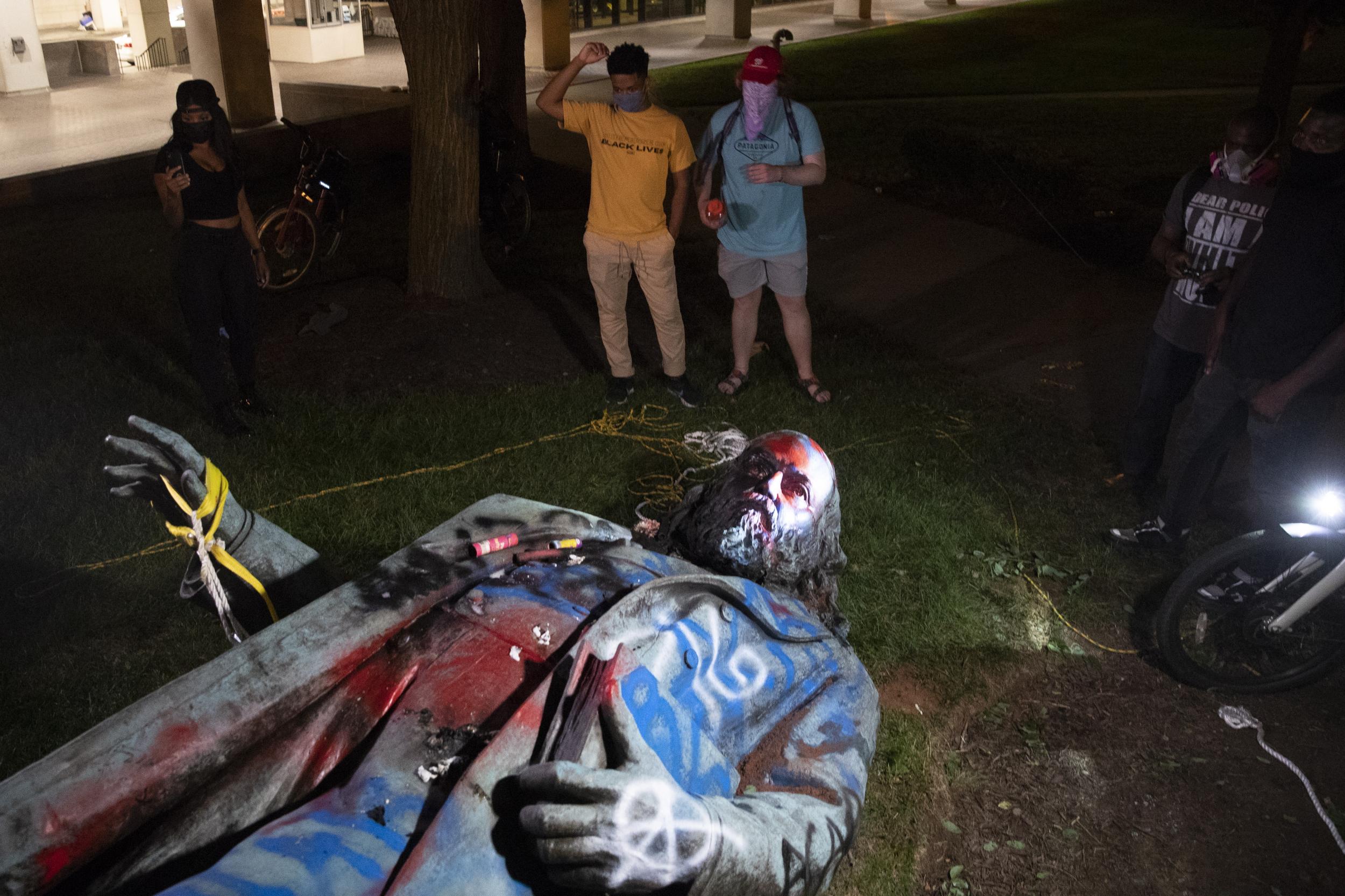The Independent's journalism is supported by our readers. When you purchase through links on our site, we may earn commission.
It wasn't a mistake to pull down the statue of Ulysses S Grant
We need to change our perspective on how to memorialize complicated individuals from history


Over the weekend, Black Lives Matters protestors continued to deface and tear down memorials to those associated with slavery and racism. In San Francisco's Golden Gate Park, protestors toppled a statue of Francis Scott Key, the composer of the National Anthem and a slave owner, as well as a statue of Spanish missionary Junipero Serra, a Roman Catholic priest who forcibly converted and brutalized Native American people. Most controversially, protesters also pulled down a statue of Ulysses S Grant — the Union general responsible for the defeat of the Confederacy — because he owned a slave.
As Adam Serwer of the Atlantic points out, Grant was in many ways a fierce and committed antiracist. As a general, he fought the Confederacy with energy and brutal commitment. He notably insisted that the Confederacy treat imprisoned black soldiers the same as white ones, to Robert E Lee's consternation. As president, Grant broke the KKK and fought for Black voting rights with a tenacity few other presidents have rivaled.
But Grant's legacy also has less admirable aspects. Grant's wife had legal ownership of several Black people when he married her, and he himself kept a person in slavery for a year before freeing him at the start of the Civil War. As president, Grant's policy towards Native American people could easily be described as cultural genocide. He instigated an illegal and bloody war against the Lakota people of the Black Hills, and used federal force to push Native people onto reservations and to slaughter the buffalo they relied on for food. "American Indians experienced some of the worst massacres and grossest injustices in history while Ulysses S Grant was in office," Alysa Landry writes at Indian Country Today.
Grant's record of great good and great evil isn't unique. Confederate statues are an easy call; there's no reason to honor people who are notable first and foremost for defending slavery. But even people who are admirable in some ways often are less so in others.
George Washington established American independence and Democratic institutions. But he also owned enslaved people and called for genocide against Native Americans. Franklin Roosevelt created America's social safety net and led the country to victory over the Nazis. But he also interned Japanese Americans in concentration camps. Gandhi's nonviolent protest helped to free India from colonial rule and inspired resistance movements worldwide. But his early writings are racist, and in his late Seventies he slept with his teenaged grand-niece. If we put up a statue to Washington, or Roosevelt, or Gandhi, are we honoring their good deeds? Or are we erasing those they harmed?
Whenever you put someone on a pedestal, you physically elevate them over their fellow humans. To do that, you have to fudge their flaws and their humanity. That's why the best memorials are those which embed people in their time and community, rather than trying to lift them above it.
An iconic model is the memorial to Robert Shaw in Boston. Shaw was the white captain of the 54th Massachusetts Infantry, the second African American regiment in the Civil War. Shaw and 40 percent of his regiment were killed in 1863 in an attack on Fort Wagner in South Carolina.
The designer of the Shaw memorial, Augustus Saint-Gaudens, originally planned a typical noble-guy-on-horse, standalone statue. But the Shaw family were dissatisfied with that idea. They insisted that the memorial had to honor the regiment Shaw fought and died with.
Saint-Gaudens' final design shows Shaw on his horse against a relief of Black soldiers, which Saint-Gaudens designed from live studies of African American men from Boston and New York. The monument doesn't honor Shaw alone or individually. Rather, it is a tribute to his solidarity with the Black men he fought with, and their solidarity with him.
“Together," the monument reads, “they gave to the nation and the world undying proof that Americans of African descent possess the pride, courage and devotion of the patriotic soldier." The Shaw memorial calls those who look at it not to admire one antiracist man, but to join an antiracist community. As historian James Loewen wrote in his beautiful essay about the memorial, "the 54th Massachusetts is…a story of human possibility. Their story suggests that we too might give meaning to our lives by doing the unthinkable and daring the impossible on behalf of justice."
The protestors knocking down statues today are trying to get the American public to confront our legacy of racism. They're also trying to make us think about what it would mean to create an antiracist public sphere, in which prejudice and hatred are remembered, but not celebrated.
One takeaway from the protest is that we need different heroes. But another, perhaps more useful lesson is that we need to think about heroism differently. Flawed human beings are just flawed human beings; you can't raise them up without lying about them. Real heroism is something we make together. Alone, Shaw is nothing. With the men of the 54th, though, he points to a better world, in which memorials are more honest and more brave, and Black lives matter.
Join our commenting forum
Join thought-provoking conversations, follow other Independent readers and see their replies
Comments
Bookmark popover
Removed from bookmarks